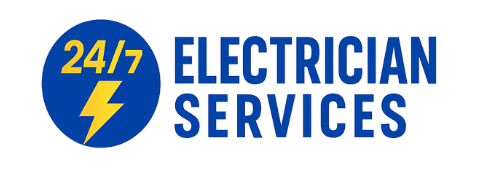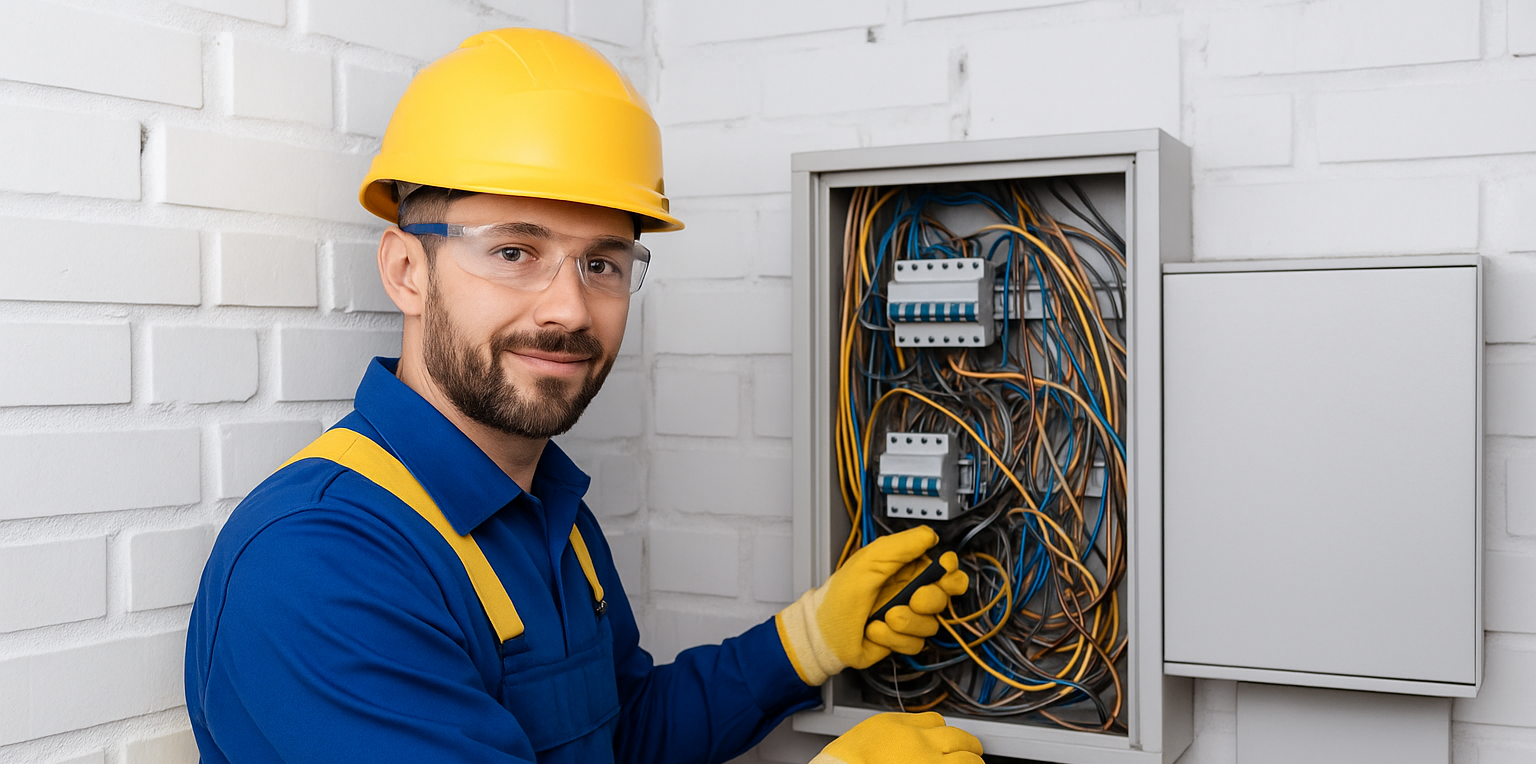Electrical overloads happen when more current is drawn on a circuit than it’s designed to handle. The result can be tripped breakers, damaged appliances, or in the worst cases – overheating that poses a fire risk. The good news: with a few smart habits and simple upgrades, you can dramatically reduce the chance of overloads and keep your home’s electrical system safe, efficient, and reliable.
Understand What Causes an Overload
Every circuit in your home has a maximum amp rating (often 15A or 20A for general-use circuits). When too many devices operate at once especially high-wattage appliances – current demand can exceed that rating. Common triggers include portable heaters, hair dryers, air conditioners, microwaves, toasters, irons, and older refrigerators. Using multiple of these on the same circuit, or plugging them into the same power strip, quickly pushes the circuit over its limit.
Know the Warning Signs
- Frequent breaker trips or blown fuses
- Lights dimming or flickering when large appliances start
- Warm or discolored outlets, switches, or power strips
- Buzzing sounds from panels or receptacles
- Burning smell near outlets or cords
If you notice these symptoms, reduce the load immediately and investigate which devices share the same circuit.
Map and Label Your Circuits
A properly labeled breaker panel is the foundation of overload prevention. Turn off one breaker at a time and note which outlets, lights, and rooms lose power. Create a clear, durable label (not just handwriting on tape) for each breaker that includes room names and high-draw outlets. This quick reference helps you spread out appliance usage and diagnose problems faster.
Calculate Your Load (Basic Rule of Thumb)
To estimate load, convert appliance wattage to amps using amps = watts ÷ volts (assume 120V for most outlets). On a 15A circuit, aim to keep continuous load at or below 12A (80% rule). On a 20A circuit, keep continuous load at or below 16A. If a single appliance pulls 12A by itself (e.g., a space heater at 1,500W), avoid running anything else substantial on that circuit.
Use Dedicated Circuits for Heavy Appliances
High-demand appliances should sit on dedicated circuits to prevent them from competing with general-use outlets. These commonly include:
- Kitchen appliances: microwave, dishwasher, garbage disposal
- Laundry: washing machine, electric dryer (240V)
- HVAC: central AC, heat pump, mini-split systems
- Bathroom: hair dryer outlets, heated towel racks
- Garage/workshop: air compressors, saws, chargers
If your home lacks dedicated circuits for these loads, consult a licensed electrician about adding them.
Stagger Usage of High-Wattage Devices
Even with dedicated circuits, running multiple heavy appliances simultaneously can stress service capacity. Build simple habits: don’t toast bread, run the microwave, and use the coffee maker at the exact same moment on a shared kitchen circuit. In laundry areas, avoid running an iron and a space heater while the washer is filling. Staggering use keeps current below the threshold and prevents nuisance trips.
Choose Quality Power Strips (and Use Them Correctly)
Power strips do not increase the capacity of a circuit; they simply split it. Avoid daisy-chaining strips or using cube taps that crowd many plugs onto one outlet. For electronics (TVs, game consoles, routers), use UL-listed surge-protective devices (SPDs). Never plug heaters, AC units, or refrigerators into power strips – these should go directly into a wall outlet.
Upgrade Old Wiring, Outlets, and Panels
Older homes may have fewer circuits, undersized panels, or outdated wiring (like aluminum branch circuits or cloth-insulated conductors). Signs you might need an upgrade include frequent breaker trips, warm outlets, insufficient outlets in high-use rooms, or a main service panel rated below your lifestyle needs. Upgrading to a modern panel with adequate amperage (often 150–200A for many homes) and adding dedicated circuits greatly reduces overload risk and improves overall safety.
Install Arc-Fault and Ground-Fault Protection
Modern code often requires AFCI (Arc-Fault Circuit Interrupter) and GFCI (Ground-Fault Circuit Interrupter) protection in specific areas. AFCIs help detect dangerous arcing conditions (often caused by damaged cords or loose connections), while GFCIs protect against shock in wet areas. While these devices don’t increase capacity, they add a crucial safety layer that can prevent overheating or fire during fault conditions.
Adopt Smart Energy Practices
- LED lighting: Replace incandescent and halogen bulbs with LEDs to cut load significantly.
- Energy-efficient appliances: Look for ENERGY STAR ratings to reduce wattage draw.
- Smart plugs and monitors: Track real-time consumption and identify problematic devices.
- Thermostat strategy: Smooth HVAC peaks by using schedules rather than drastic manual changes.
Perform a Seasonal Safety Check
Each season brings different load patterns. In winter, portable heaters and holiday lights stack onto living room circuits; in summer, window AC units strain bedroom circuits. Before peak seasons, review what will run where, verify cords are in good condition, and relocate or add circuits if needed. Outdoors, ensure extension cords and outlets are rated for exterior use and protected by GFCI.
Use Extension Cords Sparingly and Safely
Extension cords are temporary solutions, not permanent wiring. If you must use one, choose a heavy-duty, grounded cord sized for the appliance’s current draw and length. Avoid running cords under rugs or through doorways, and never use them for heaters or AC units. If an area consistently needs extra reach or outlets, install a new receptacle on an appropriate circuit.
Keep Connections Tight and Vents Clear
Loose connections at outlets, switches, and breaker terminals create resistance and heat – conditions that can exacerbate overloads. Periodic professional inspections help ensure terminations are snug and conductors are undamaged. Also, keep appliance vents (refrigerators, dryers, AV receivers) free of dust and obstructions so motors and electronics don’t draw excess current due to overheating.
Plan for Today and Tomorrow
If you’re adding an EV charger, workshop tools, a hot tub, or a home office with multiple monitors, plan capacity in advance. An electrician can perform a load calculation for your service, recommend panel upgrades, add subpanels, and design dedicated circuits where appropriate. Investing now prevents nuisance trips and ensures safe, future-proof power distribution.
What to Do If a Breaker Trips
- Turn off or unplug devices on the affected circuit.
- Reset the breaker by switching fully OFF, then ON.
- Plug in and turn on devices one at a time to find the trigger.
- Relocate high-wattage appliances to different circuits or stagger usage.
- If trips persist, call a licensed electrician to inspect the circuit and load.
When to Call a Professional
Seek professional help if you experience repeated trips, warm outlets, buzzing sounds, visible sparking, discolored receptacles, or if your panel is outdated or undersized. A licensed electrician can assess capacity, identify hidden faults, and recommend targeted upgrades that resolve overloads long-term.
Preventing electrical overloads is a mix of awareness, organization, and smart upgrades. Label your panel, distribute high-wattage devices thoughtfully, avoid risky power strip habits, and modernize circuits and panels as your household’s needs grow. With these steps, you’ll protect your home, extend appliance life, and enjoy dependable power – season after season.

